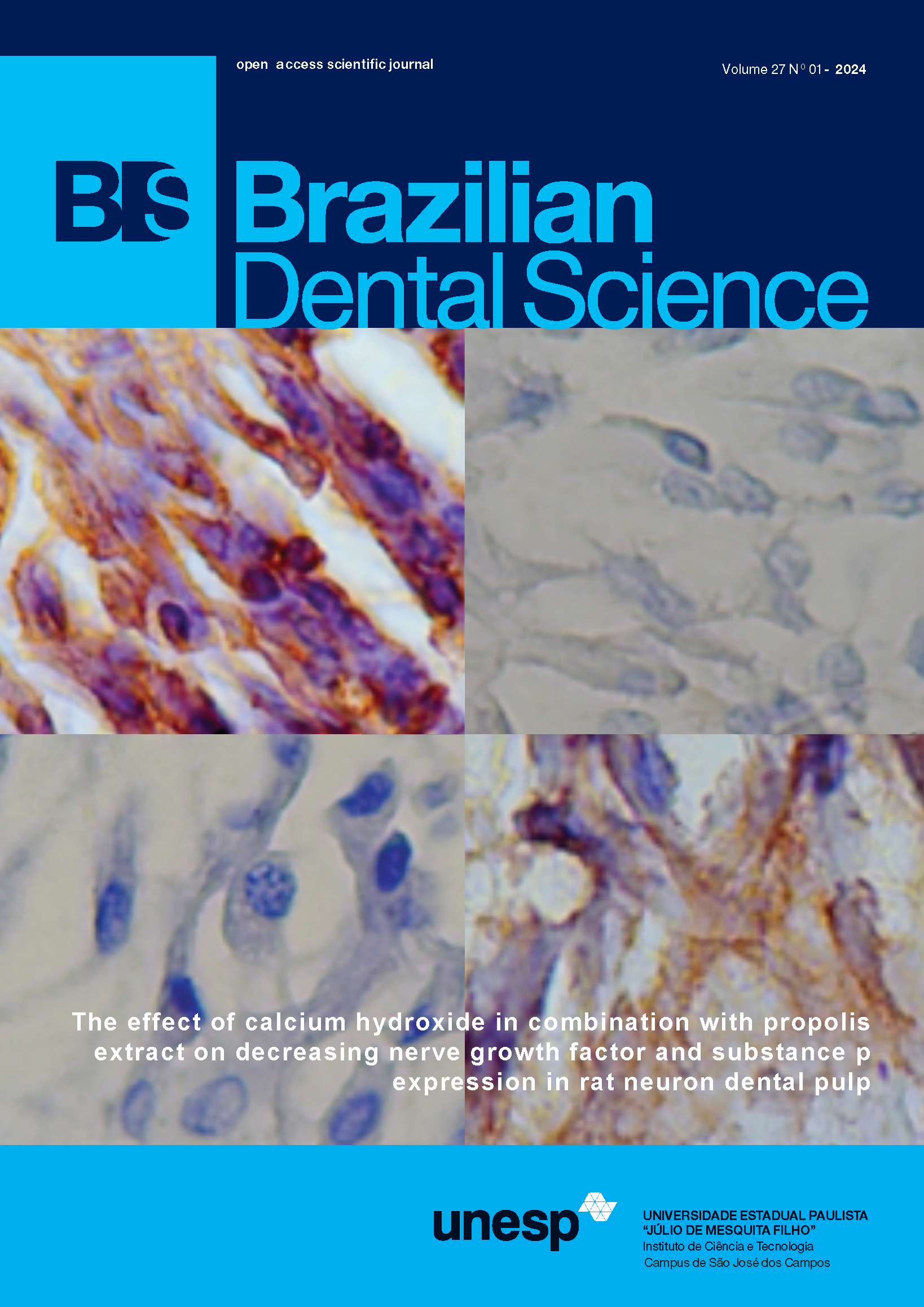Is scanning under rubber dam isolation a feasible approach for the execution of indirect restorations?
DOI:
https://doi.org/10.4322/bds.2024.e4099Resumo
Objective: The aim of the study was to report the aplicability of intraoral scanning while rubber dam isolation is in place. Material and Methods: Female patient, 50 years old, required restorative procedures on teeth 35 and 37. An intraoral scan was initially performed on both arches. Isolation was carried out from 33 to 37, tooth preparation and immediate dentin sealing were carried out. A new scan with the rubber dam in place was performed and a CAD/CAM lithium disilicate hybrid block was digitally designed, milled, crystallized and cemented under the tooth surface with the rubber dam still in position. After completing this stage, the rubber dam was removed, the occlusion was verified, presenting excellent aesthetic and functional results. Results: The absolute isolation process used in the present study works as an excellent device for gingival retraction. Conclusion: The absolute isolation can be recommended in clinical activities of intraoral scanning favoring the quality of the final result of treatments.
KEYWORDS
CAD/CAM; Denture precision attachment; Digital technology; Mouth rehabilitation; Rubber dams.
Downloads
Downloads
Publicado
Como Citar
Edição
Seção
Licença
TRANSFERÊNCIA DE DIREITOS AUTORAIS E DECLARAÇÃO DE RESPONSABILIDADE
Toda a propriedade de direitos autorais do artigo "____________________________________________________________________" é transferido do autor(es) para a CIÊNCIA ODONTOLÓGICA BRASILEIRA, no caso do trabalho ser publicado. O artigo não foi publicado em outro lugar e não foi submetido simultaneamente para publicação em outra revista.
Vimos por meio deste, atestar que trabalho é original e não apresenta dados manipulados, fraude ou plágio. Fizemos contribuição científica significativa para o estudo e estamos cientes dos dados apresentados e de acordo com a versão final do artigo. Assumimos total responsabilidade pelos aspectos éticos do estudo.
Este texto deve ser impresso e assinado por todos os autores. A versão digitalizada deverá ser apresentada como arquivo suplementar durante o processo de submissão.




























